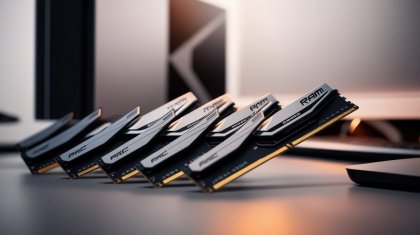PC upgrading or PC building is one of those fantastic things to do, but some simple things need to be done, including installing a power supply. Whether upgrading for better performance or replacing a dead component, you must know how to install a power supply for your PC. And with how easy it is to shop on the web now, it's easy to purchase a power supply online and find a great match and quality.
In this tutorial, we will guide you through installing a power supply unit in your computer so you will be confident that you can do it yourself. We will also answer some of the most frequently asked questions, such as how to install a power supply unit in a computer and how often you should replace it.
Why is the power supply crucial?
We will first see why the power supply unit (PSU) is required before seeing how to install one for your computer. It is the most integral part of your computer hardware, supplying power to all the hardware devices like the motherboard, CPU, GPU, and storage. A stable power supply makes your computer function normally and prevents hardware failure from being unstable or having no power.
When to Replace Your Power Supply
It's great if you've got a hack for swapping out a PSU on Reddit or wherever you're getting your tech forums, but generally, you should consider replacing your power supply when:
- Your computer is shutting down or rebooting randomly.
- You notice unusual sounds emanating from the PSU.
- You're experiencing a high number of crashes or hardware issues.
It has been 5-7 years since the system was last upgraded.
You're replacing with more efficient components.
How often you'll replace the computer power supply will depend on use and quality, but here is a guesstimate: every 5-7 years or whenever you first notice problems.
Before You Start: What Do I Need?
- A power supply with a sufficient wattage rating for your PC's requirements.
- Screwdriver (assuming Phillips-head).
- Your PC case.
- Power supply cables that came with your PSU.
- Your PC user manual or motherboard shows the power supply configuration for reference.
Tip: Buying a power supply online from well-known brands is always preferable to ensure quality and compatibility.
Step-by-Step: Installing a Power Supply in Your PC
- Power Down and Unplug Your PC
First, power down your PC and disconnect all cables. It is always best to be in a static-free area—ground yourself by placing a metal surface on your case or an anti-static wrist strap on your wrist.
- Open Your PC Case
Remove the side panel of your case. Depending on your case design, this usually involves unscrewing a few screws at the back. Keep these screws safe—you’ll need them to close the case later.
- Remove the Old Power Supply (if applicable)
If you’re wondering how to change or replace the power supply in your computer, carefully disconnect all cables from your current PSU. Then, unscrew the unit from the case.
Note: The same process applies if you install a PSU into an assembled computer, but consult your model's manual.
- Get Ready with Your New Power Supply
If you buy a power supply online, ensure it's meant for your build. Compare wattage, size (e.g., ATX), and connectors. When you have obtained it, disassemble your new power supply and place it neatly in place of your cables.
- Install the New Power Supply
Install the new PSU into the case and the holes, using the screws that come with it. Take care; sometimes, the PSU is installed at the top or bottom.
- Connection of Power Supply Cables
This is a critical step—properly connecting power supply cables makes your PC safe to operate. Connect the primary 24-pin motherboard power cable, CPU 4/8-pin connector, and additional power connectors for your video card or hard drives.
Tip: If unsure, check out the power supply to the motherboard diagram. Proper connections are the most significant part of installing a power supply on a motherboard.
- Double Check All Connections
Before closing your case, double-check everything with cables properly routed. This will leave room for air flow and lower the possibility of disconnection.
- Close the Case and Power Up
Now, put it all together and shut the side panel. Tighten the screws, plug in the power cord, and boot your PC to test.
Testing and Final Checks
When you boot up your PC, it will most likely boot. If it refuses to start, double-check all the connections. If you want to learn how to boot up a power supply out of a PC—i.e., for use as a diagnostic tool only—then you can do so with most power supplies that can facilitate what is termed as a "paperclip trick" where you short two pins to get it to boot without being installed in a case. Always employ safety protocols, be safe, and document safety protocols.
Troubleshooting Common Issues
If the PC will not power up or turn on, recheck all connections and whether the power button is mounted correctly.
The system keeps shutting down or restarting, which can indicate that the PSU is not working correctly or that there is insufficient wattage.
Strange noises: The PSU fan will not operate normally; replace the PSU if any noises are heard.
Final Thoughts: Replacing the Power Supply in Your PC
Upgrading, fixing, or simply observing, replacing a computer power supply is a patience test requiring the proper tools. Remember, the step-by-step power supply installation in your PC is done cautiously by removing, installing, and connecting wires.
If you don't know how to replace the PC power supply or when to replace it, pages such as When to Replace PSU Reddit or consulting a professional will be helpful.
Also, remember to purchase a power supply online from a quality company for compatibility. It's a cheap price to pay, saving you headaches and ensuring that your PC is running top-shelf.
Frequently Asked Questions
Is any power supply compatible with any PC?
Not quite. Power supplies come in some form factors (ATX, SFX), so buy an online power supply of the same form factor as your case and motherboard specifications.
How to start a PC power supply?
Most contemporary PSUs will boot without a problem once connected and modulated with power by the PC power supply switch. To test the mod board, you might power the power supply without a computer using the paperclip trick.
Is the power supply difficult to install?
Installing a power supply on your computer is easy if you approach it in this order. Just ensure that safety measures are being taken.
Is it easy to replace a PC power supply?
Yes, it's a question of a few quick button presses or upgrades for the average user, as long as they have a good, step-by-step guide.
Will a bad PSU damage a PC?
Yes. An inoperable PSU and one that cannot provide the needed power will crash a PC or annihilate hardware. Knowing the lifespan of a PSU and when to upgrade is worth noting.
Final Note
It is suggested that you replace or upgrade your power supply during a computer build or upgrade. It will be helpful to get familiar with adding a power supply to your computer and PC to maintain your system in a stable, efficient, and reliable form. Always buy a power supply while shopping online from websites of a renowned authority to gain top quality and compatibility.








